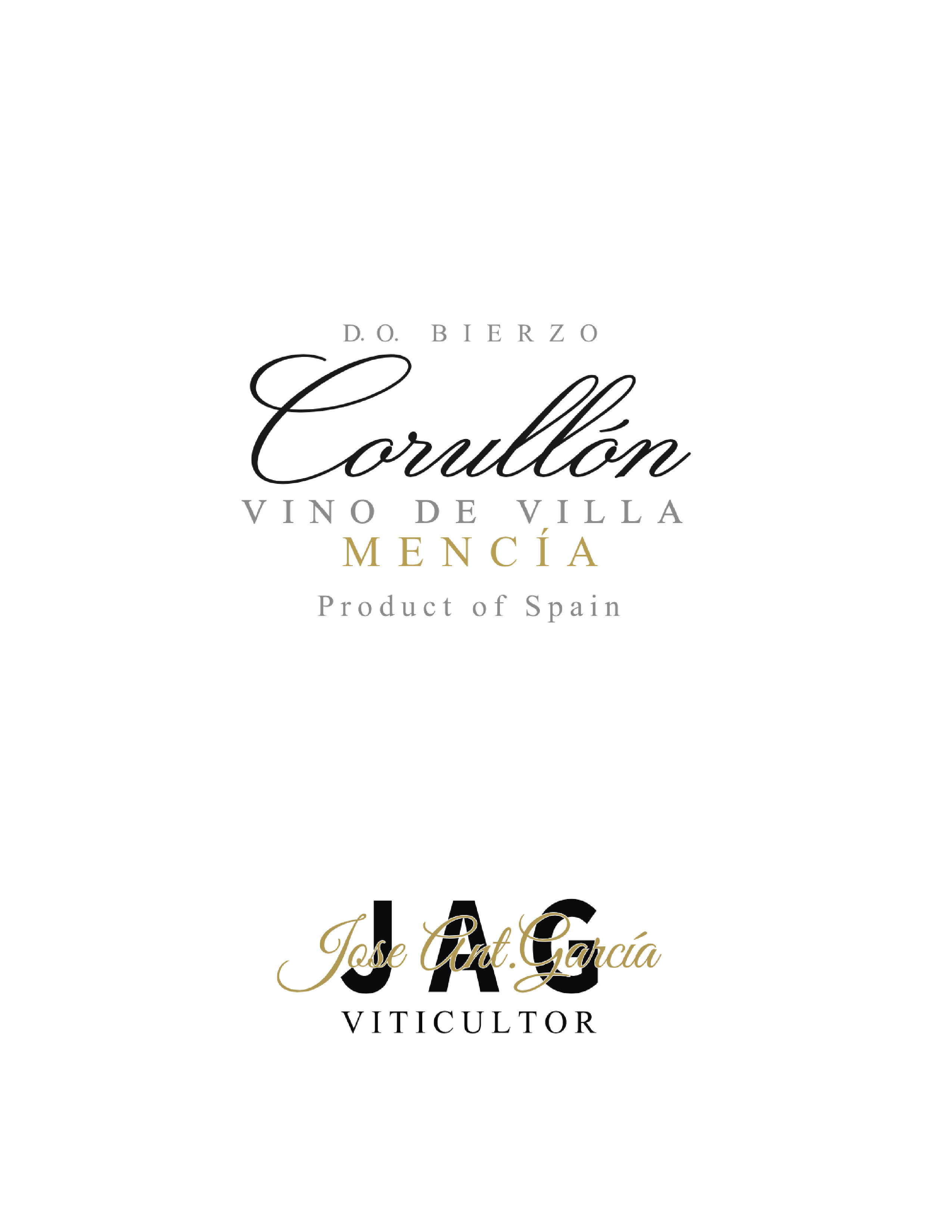Jose Antonio García Corullón Vino de Villa Bierzo 2020
Jose Antonio García Corullón Vino de Villa Bierzo 2020
Jose Antonio García and his wife Julia Peña García (JAG) are at the forefront of the next generation of vignerons in Bierzo, leading the charge towards wines of place and definition. Their familial roots in Bierzo are fundamental to them, as they farm all of their own vineyards and do not buy grapes, performing all of the work in the vineyards themselves, which is signified by the term viticultor on their bottles. Jose’s mother is a native of Valtuille de Abajo, and his father is a native of Corullón. Together, Jose and Julia’s families have owned vineyards in Bierzo for generations. All of the work in the vineyard and winery is performed manually with the use of gravity, minimal intervention, and no chemical inputs. Quality, excellence, and soul are always the philosophy. JAG is defined by small production, very low yields, artisanal methods, and minimal intervention, yielding complex, elegant, delicious wines among the finest in Bierzo.
Bierzo has adopted a new quality-based classification system for its wines, closely following the Burgundian structure of regional, village, and single-vineyard wines (called Paraje in Bierzo). In the Vino de Villa classification system, 100% of the grapes must come from vineyards within the designated village, and yields must be at least 20% below the limit for D.O. Bierzo (25% for Paraje wines). Other quality-conscious regulations have been implemented that now make the Bierzo appellation a leading producer of fine wine not only in Spain but in the whole of Europe.
The Corullón Vino de Villa showcases the wilder and deeper character of the wines from the slate, quartzite, and limestone soils on the slopes of Corullón. It has fine minerality that makes it neatly textured and a structure that is well-suited to improvement in bottle.
Approaching Corullón, the Río Burbia (which empties into the Sil River) marks the change in soil types from the red, ferrous-clay iron deposits of Valtuille to the darker, volcanic clay slates (with no iron) of the Corullón area. The old, native bush vines of mencía, godello, palomino, and doña blanca share acreage on the mountain with chestnut trees, from which Jose and Julia use the shells as natural compost. Several small vineyards planted on pure, black slate soils were blended into one Corullón village wine. Among them, Pico de Lugar and Las Tías stand out as exceptional sites of great historical importance. These are very small, long-held family vineyards in the Corullón village with an average vine age of 70 to 100 years with altitudes that range from 650m to 980m. Las Tías, one of the primary vineyards, lies in the transition zone between the province of Lugo and Castilla y León, connecting Bierzo to Valdeorras and the Val do Bibei in Ribeira Sacra. As such, it receives the most Atlantic influence of the vineyards in Corullón. The viticulture is strictly organic, and the only compost used is local, organic chestnuts, which grow in the vineyards.
Vinification – Following a manual harvest, bunches are partially destemmed, while other whole clusters of grapes are crushed by foot in old, open-top foudres. The wine is then spontaneously co-fermented with indigenous yeast in large, open-top foudres for 30 days with manual punch downs twice a day. No temperature control. No pumps are used at the winery, with gentle racking done by gravity. Malolactic fermentation is spontaneous. Aging is on fine lees in new and old French oak barrels (300L and 500L) for 11 months. Very light fining with bentonite.


